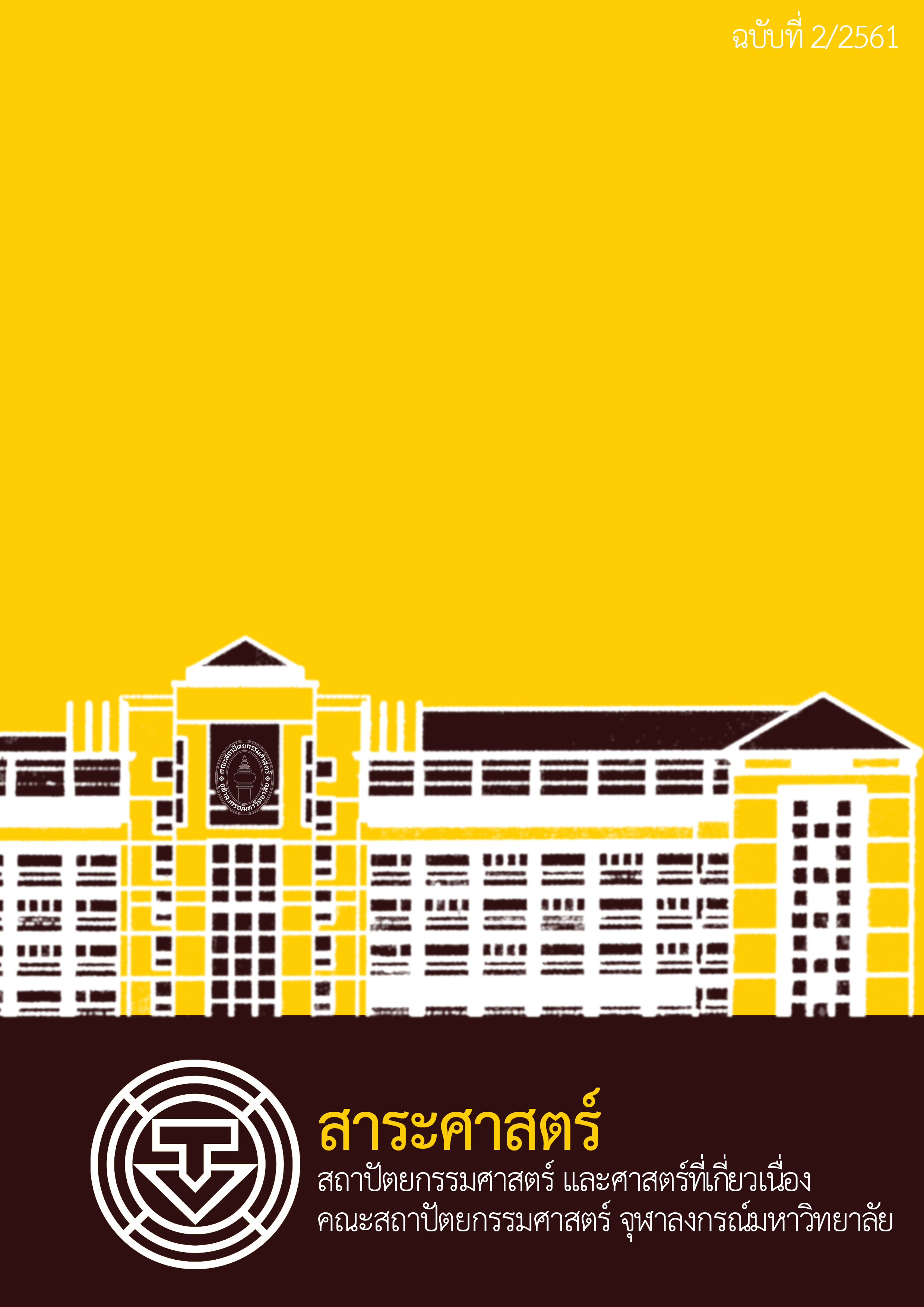Design Guidelines and Improvement of Housing, Building and Outdoor Spaces for The Elderly Living in Crow Property Bureau Areas Located in Bangkok Urban Area : A Case Study of Sup Sin Kao Community, Sup Sin Mai Community and Khlong Phlapphla Community, Wang Thonglang District, Bangkok
Main Article Content
Abstract
The age structure of the Thai population in the past has been transformed into the elderly population
structure, so the community can not support the needs or help the elderly because of its high urban status.
The objectives of this study were 1)To study the social, economic and housing characteristics of the elderly.
2) Analysis of physical patterns, occupational behavior, and occupational problems of the elderly. 3)
Proposed Physical Design for the Elderly The researcher chose to study three areas: Sup Sin Mai community,
Sup Sin Kao community and the Khlong Phlapphla community, interviewed 110 elderly people and selected
the sample as a rotten study. Examples are guidelines for improvement of housing.
Elderly people in the community are still living in self-employment and their families because of their
low status and income, which is a factor that causes the elderly to stay home without time to do activities in
the public area. Older people do not consider relocating because they have lived in the community for more
than 30 years. In the elderly community. The most area accidents is the patio area (the area where the elderly
come out during the day) because of the different floor levels and floor decay. The secondary is the bathroom because of the bathroom slip floor and doorsills etc.The study concluded that the economy and living are the main factors affecting the elderly in urban areas. In order to improve the housing, local materials should be used in the community. Community technicians should be promoted as intermediaries to improve housing and external space to be sustainable in the community.
Article Details
References
นริสา วงค์พนารักษ์, การสร้างเสริมสุขภาวะทางจิตในสังคมผู้สูงอายุ วารสารสาธารณสุข, 2556.
บรรณโศภิษฐ์ เมฆวิชัย และคณะ, มาตรฐานที่อยู่อาศัยสำหรับผู้มีรายได้น้อย(ในเมือง), 2549.
ประดับ บุญชื่นชม, เทคโนโลยีที่เหมาะสม (Appropriate Technology), 2529.
วิทยาลัยประชากรศาสตร์ จุฬาลงกรณ์มหาวิทยาลัย, แผนพัฒนาคุณภาพชีวิตผู้สูงอายุกรุงเทพมหานคร ระยะที่ 1(พ.ศ.2557-2560). พิมพ์ครั้งที่ 1. กรุงเทพมหานคร : โรงพิมพ์ธนเชษฐ์, 2557.
สำนักงานสถิติแห่งชาติ, การสำรวจประชากรสูงอายุในประเทศไทย, 2557.
สำนักอนามัยสิ่งแวดล้อม กรมอนามัย กระทรวงสาธารณสุข, การจัดสภาพแวดล้อมที่เหมาะสมกับผู้สูงอายุ, 2558.
สภาปฏิรูปแห่งชาติ, วาระปฏิรูปที่ 30 : การปฏิรูประบบเพื่อรองรับสังคมสูงวัย. กรุงเทพมหานคร : เท็กซ์ แอนด์ เจอร์ นัล พับลิเคชั่น, 2558.
อรไพลิน โชควิริยากร. “สภาพการอยู่อาศัยของผู้สูงอายุในโครงการจัดสรรประเภทบ้านเดี่ยว บ้านแฝด บ้านแถว: กรณีศึกษา โครงการไอลีฟพาร์ค และ ไอลีฟทาวน์ กานดา พระราม 2 กม.14 (แสมดา).วิทยานิพนธ์ปริญญามหาบัณฑิต, ภาควิชาเคหการ คณะสถาปัตยกรรมศาสตร์ จุฬาลงกรณ์มหาวิทยาลัย, 2558.
Elizabeth Burton and Lynne Mitchell. Inclusive urban design: Street for life. Oxford: Architectural Press, 2006.
H. Frey. Towards a More Sustainable Urban Form : Designing the City. America, 1999.
UNFPA and Help Age International, Ageing in the Twenty-First Century: A Celebration and A Challenge, 2015.
Lawton, M.P. Planning and Managing Housing for Older People. New York : John Wiley & Sons, 1975.
WHO, World report on ageing and health, 2015.


